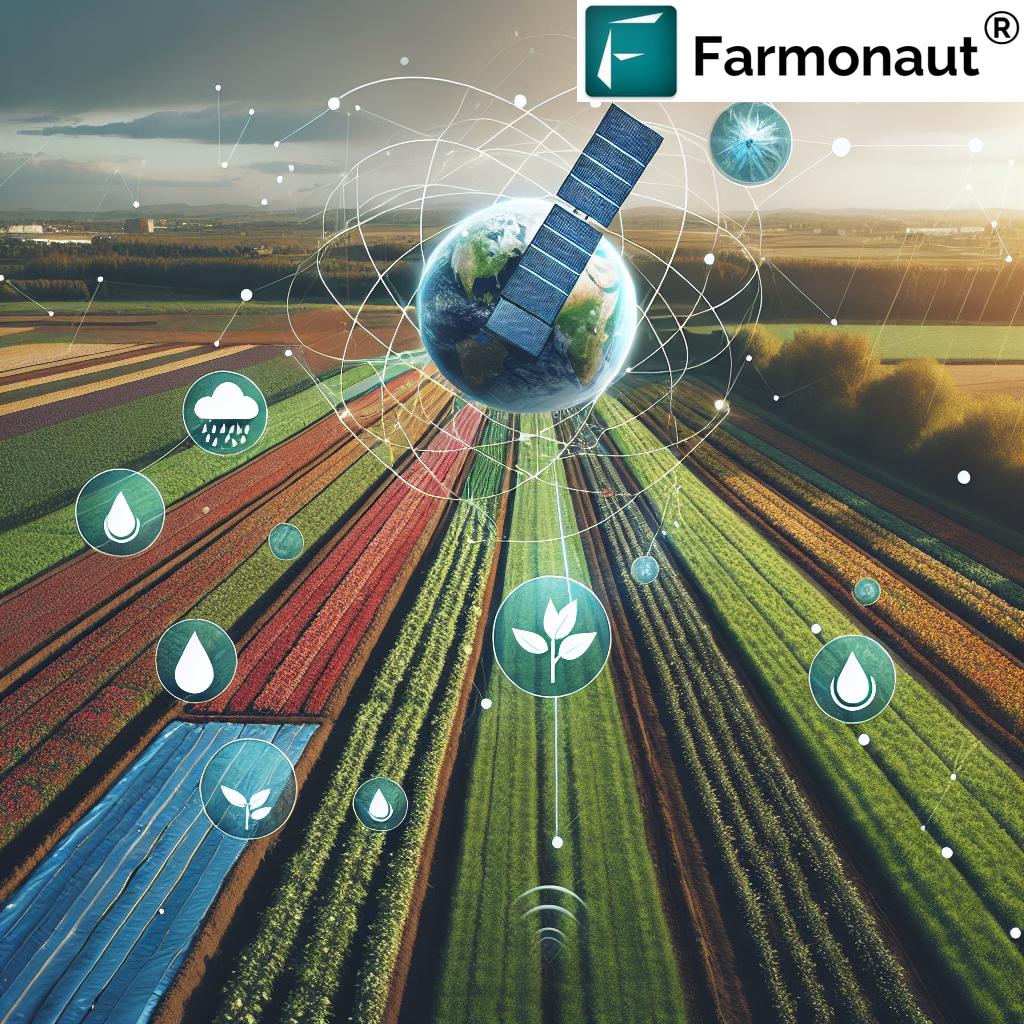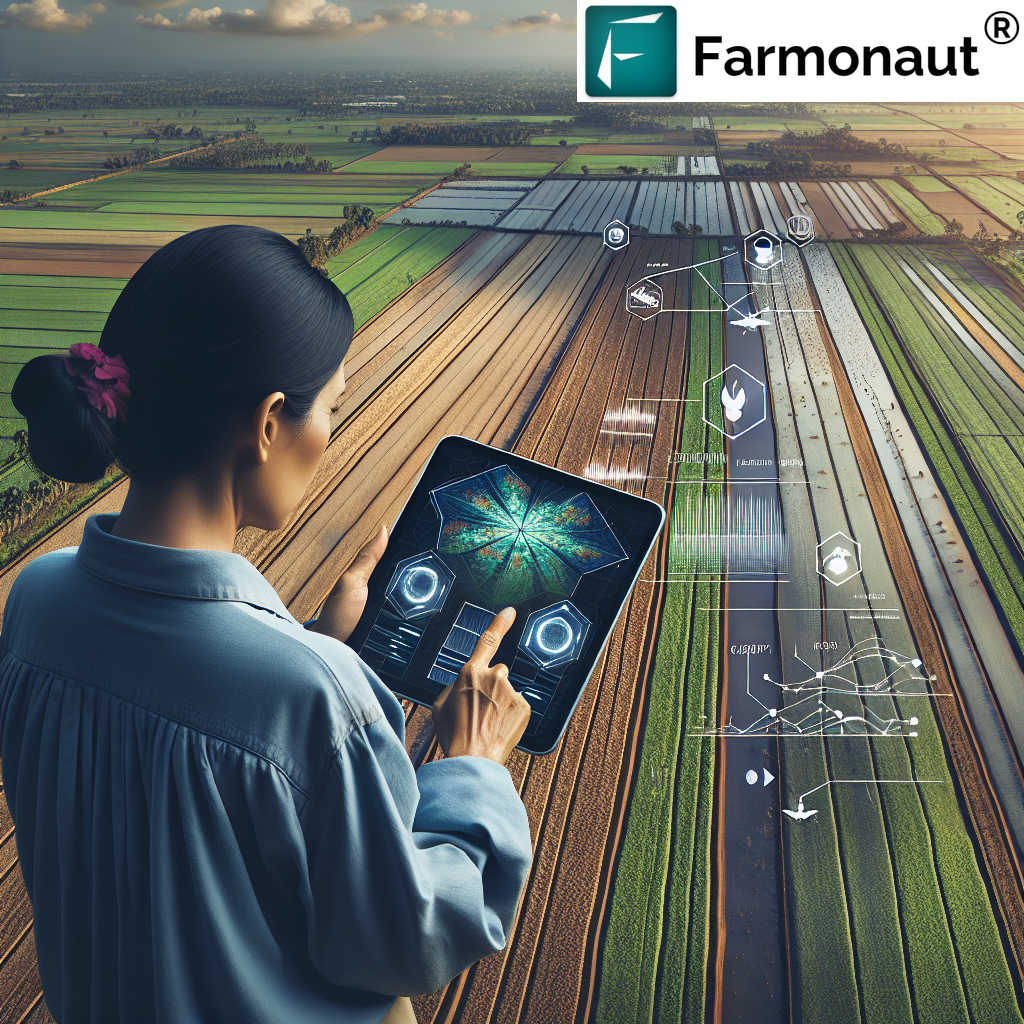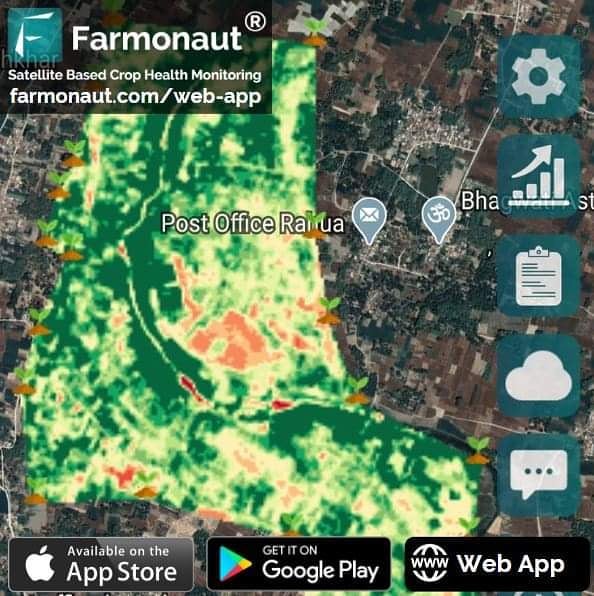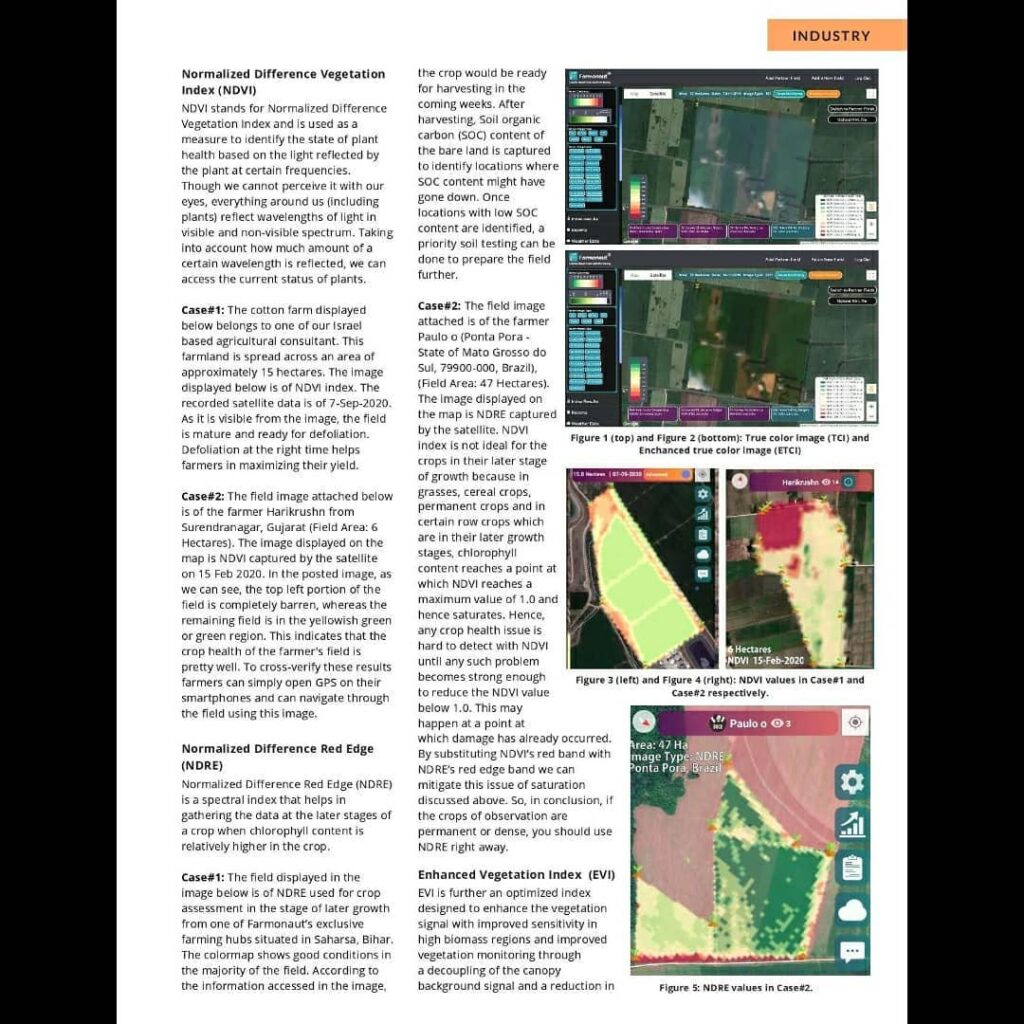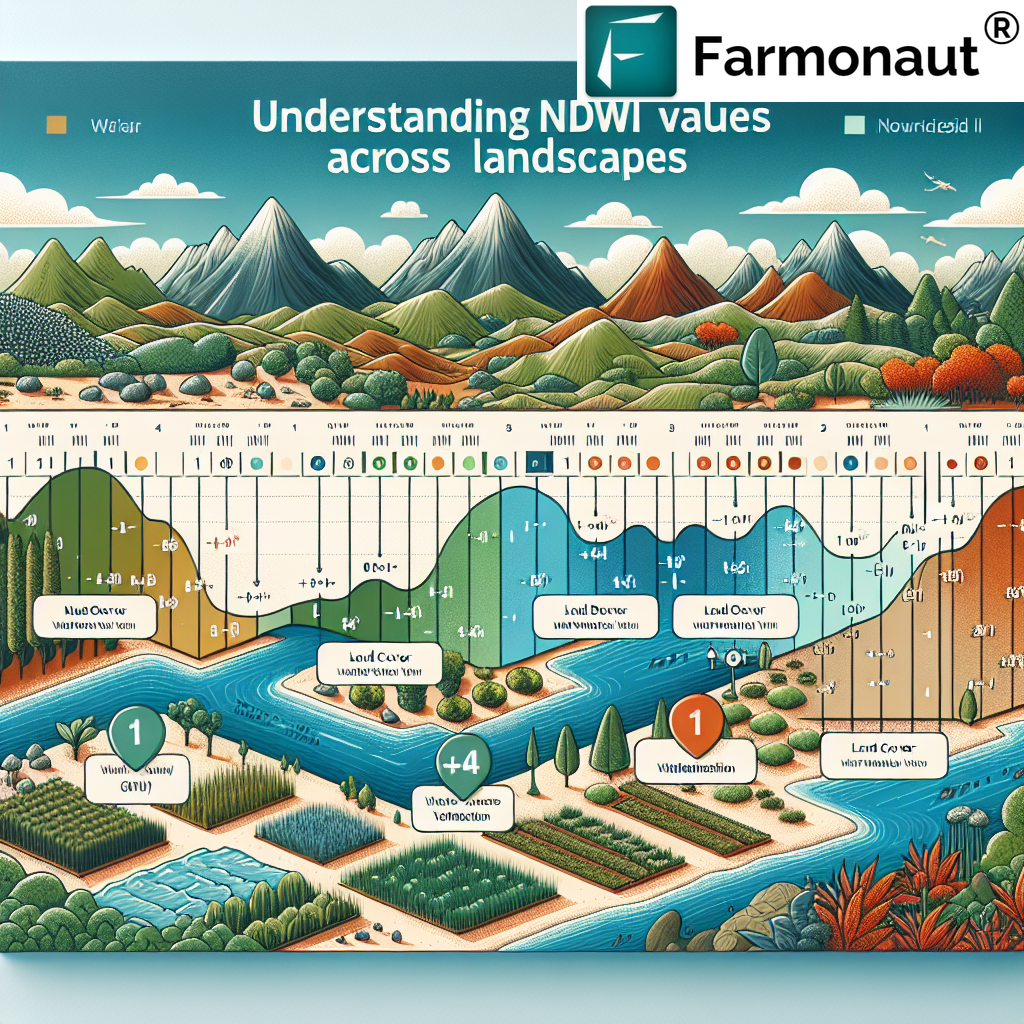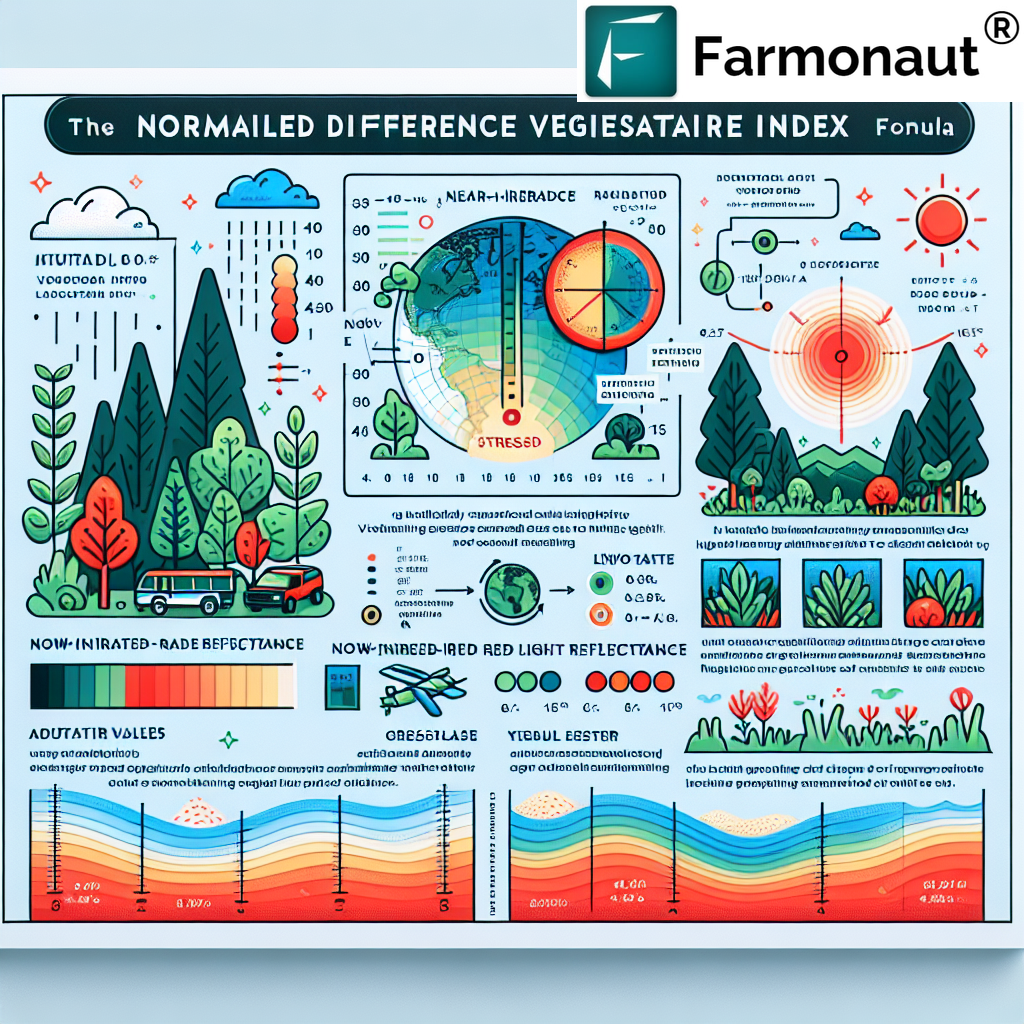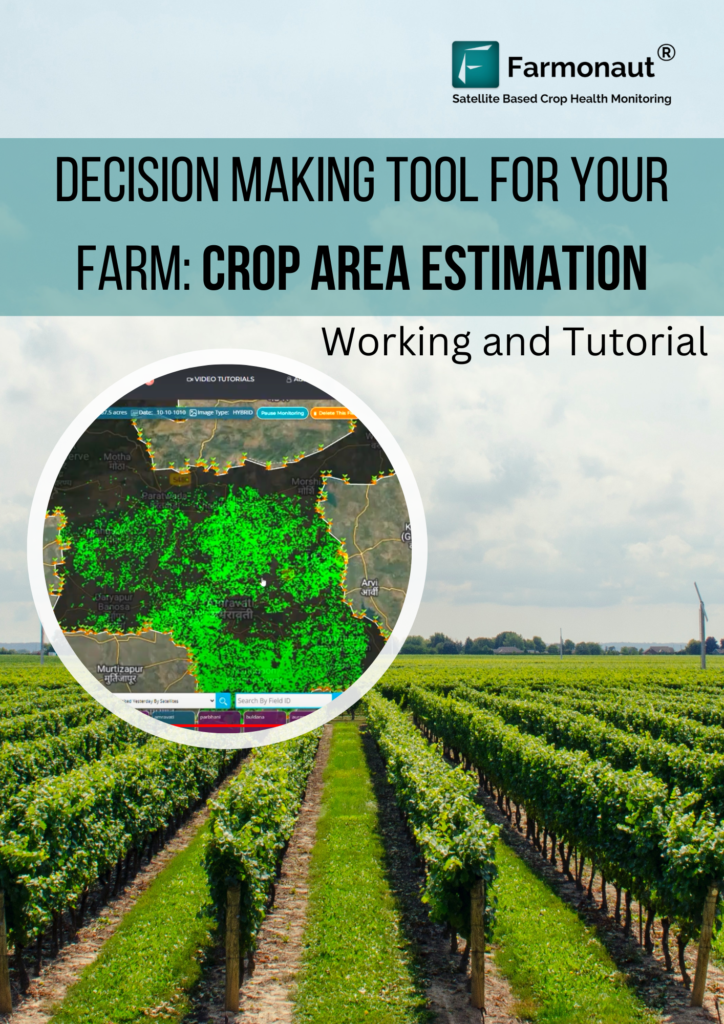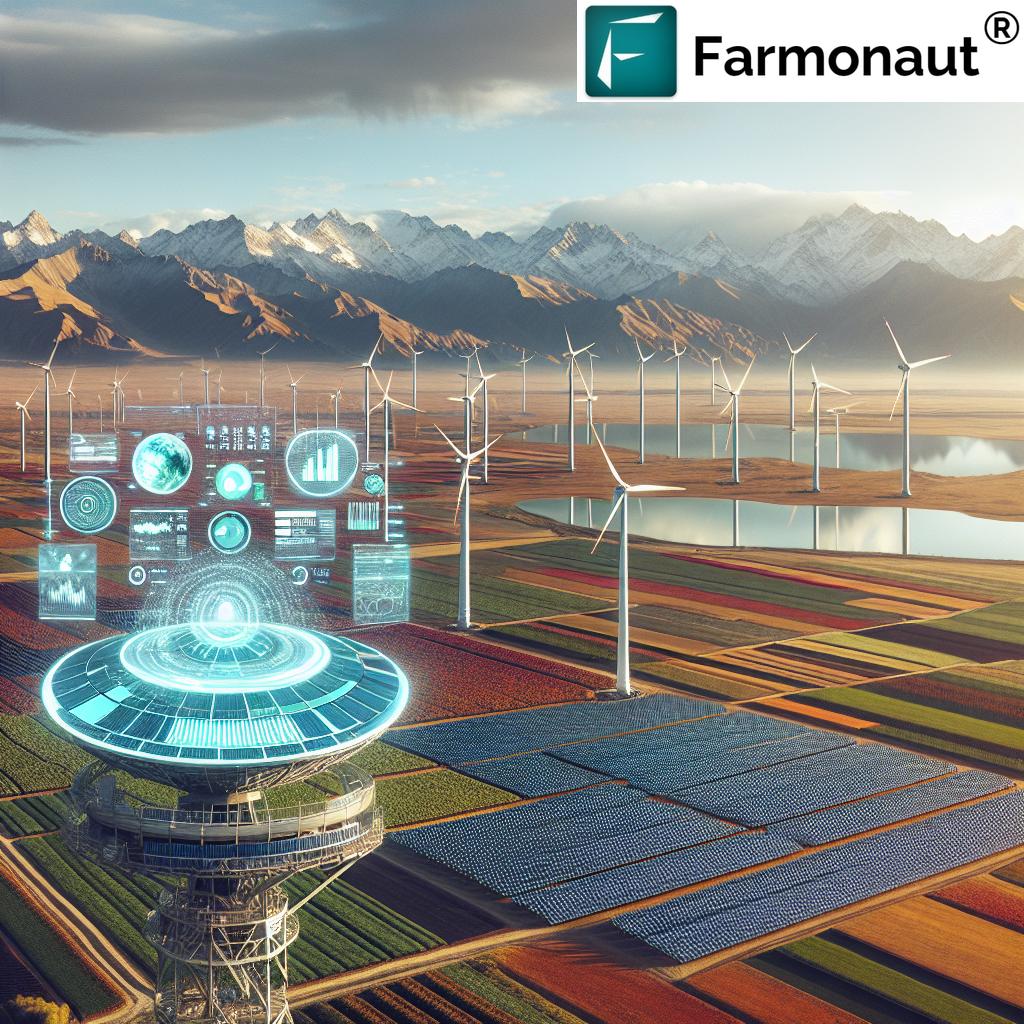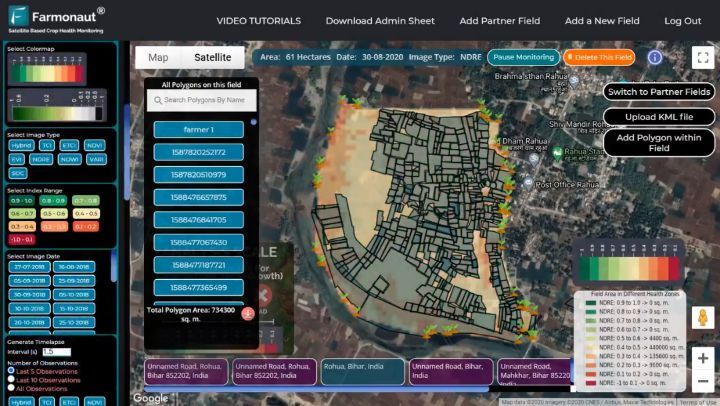
Revolutionizing Paddy Farming: A Comprehensive Look at Crop Health Monitoring and Soil Management
At Farmonaut, we’re excited to share our latest insights on paddy farming and the innovative technologies we’re using to revolutionize agricultural practices. As the paddy season draws to a close in the coming weeks, we’ve been closely monitoring crop health variations in Rahua, Bihar. Our findings provide valuable information for farmers and agricultural professionals alike, showcasing the power of satellite-based monitoring and precision agriculture.
Understanding Crop Health Variation with NDRE
One of the key tools we’ve employed in our analysis is the NDRE (Normalized Difference Red Edge) index. This advanced vegetation index is particularly useful for assessing crops in their later growth stages. Let’s delve deeper into what NDRE is and why it’s so valuable for crop health monitoring.
What is NDRE?
The NDRE index is a spectral measurement that utilizes the red-edge band of the electromagnetic spectrum. This band is sensitive to changes in chlorophyll content and leaf structure, making it an excellent indicator of plant health and vigor. The NDRE index is calculated using the following formula:
NDRE = (NIR – Red Edge) / (NIR + Red Edge)
Where NIR is the Near-Infrared reflectance and Red Edge is the reflectance in the red-edge band.
Benefits of NDRE Over NDVI
While the NDVI (Normalized Difference Vegetation Index) is more commonly known, NDRE offers several advantages, especially for mature crops:
- Better sensitivity to changes in chlorophyll content
- Less prone to saturation in dense canopies
- More accurate assessment of crop health in later growth stages
- Improved detection of stress factors such as nutrient deficiencies
Interpreting NDRE Data
In our recent analysis of the paddy fields in Rahua, Bihar, we observed NDRE values from July 26, 2020, to August 30, 2020. The colormap generated from this data provides crucial insights into crop health:
- High NDRE values (green areas): Indicate healthy, vigorous crops with high chlorophyll content
- Moderate NDRE values (yellow areas): Suggest average crop health, potentially requiring closer inspection
- Low NDRE values (red areas): May indicate stressed or unhealthy crops, necessitating immediate attention
Our analysis revealed that the majority of the area is in good condition, showing promising signs for a successful harvest in the coming weeks.
Post-Harvest Soil Analysis: Focusing on Soil Organic Carbon
As we look beyond the current harvest, our team at Farmonaut is already planning for the next crucial step: soil health assessment. One of the key parameters we’ll be measuring is soil organic carbon (SOC) content.
The Importance of Soil Organic Carbon
Soil organic carbon is a vital component of soil health and plays a crucial role in sustainable agriculture. Here’s why it’s so important:
- Improves soil structure and water retention capacity
- Enhances nutrient availability and cycling
- Supports beneficial soil microorganisms
- Contributes to carbon sequestration, helping mitigate climate change
- Increases soil resilience to erosion and environmental stresses
Measuring Soil Organic Carbon
At Farmonaut, we employ advanced satellite technology to conduct initial assessments of SOC content across large areas. This allows us to identify potential hotspots where SOC levels may have decreased. Our process involves:
- Capturing high-resolution satellite imagery of the bare land post-harvest
- Analyzing spectral signatures to estimate SOC content
- Identifying areas with potentially low SOC levels
- Conducting priority soil testing in these identified locations
This targeted approach ensures efficient use of resources while providing valuable data for soil management strategies.
How to Improve Organic Carbon in Soil
For farmers looking to enhance their soil health, here are some effective strategies to increase soil organic carbon:
- Implement crop rotation: Diversify crops to improve soil structure and nutrient cycling
- Use cover crops: Plant cover crops during fallow periods to add organic matter to the soil
- Practice conservation tillage: Minimize soil disturbance to preserve existing organic matter
- Apply organic amendments: Use compost, manure, or other organic materials to boost soil organic matter
- Manage crop residues: Incorporate crop residues back into the soil rather than removing or burning them
- Implement agroforestry: Integrate trees into farming systems to increase organic matter inputs
By implementing these practices, farmers can significantly improve their soil health and create more sustainable, productive agricultural systems.
The Farmonaut Advantage: Satellite-Based Farm Monitoring
At Farmonaut, we’re proud to offer cutting-edge satellite-based farm monitoring solutions that provide unparalleled insights into crop health and soil conditions. Let’s compare our system with other popular farm monitoring methods:
| Feature | Farmonaut Satellite System | Drone-based Monitoring | IoT-based Monitoring |
|---|---|---|---|
| Coverage Area | Large scale (thousands of hectares) | Medium scale (hundreds of hectares) | Small scale (tens of hectares) |
| Data Frequency | Regular updates (every 3-5 days) | On-demand (requires manual flights) | Continuous (real-time data) |
| Initial Investment | Low (subscription-based) | High (equipment cost) | Medium (sensors and network setup) |
| Ease of Use | High (web and mobile app access) | Medium (requires trained operators) | Medium (requires technical setup) |
| Data Analysis | Advanced AI and machine learning | Manual or semi-automated | Automated but limited scope |
| Scalability | Highly scalable | Limited by equipment and personnel | Limited by sensor network |
As you can see, our satellite-based system offers numerous advantages, especially for large-scale farming operations and those looking for a cost-effective, easy-to-use solution.
Farmonaut’s Comprehensive Farm Management Solutions
At Farmonaut, we offer a range of tools and services designed to empower farmers and agricultural professionals:
- Satellite-Based Crop Health Monitoring: Real-time insights into vegetation health, soil moisture, and more. Try our app
- Jeevn AI Advisory System: Personalized farm advice powered by artificial intelligence
- Blockchain-Based Product Traceability: Ensure transparency and security in your supply chain
- Fleet and Resource Management: Optimize your agricultural operations
- Carbon Footprinting: Monitor and reduce your environmental impact
For developers and businesses looking to integrate our powerful tools into their own systems, we offer comprehensive API access. Check out our API documentation for more information.
Get Started with Farmonaut Today
Ready to revolutionize your farming practices? Download our app now:
Frequently Asked Questions (FAQ)
1. What is NDRE and how is it different from NDVI?
NDRE (Normalized Difference Red Edge) is a vegetation index that uses the red-edge band of the electromagnetic spectrum to assess plant health. It’s particularly useful for mature crops and is less prone to saturation than NDVI (Normalized Difference Vegetation Index) in dense canopies. NDRE provides better sensitivity to changes in chlorophyll content and nutrient status in later growth stages.
2. How does Farmonaut measure crop health?
Farmonaut uses satellite imagery to capture multispectral data of crop fields. We analyze this data using advanced algorithms to calculate various vegetation indices, including NDRE and NDVI. These indices provide insights into crop health, vigor, and potential stress factors.
3. What is soil organic carbon and why is it important?
Soil organic carbon (SOC) refers to the carbon component of organic matter in soil. It’s crucial for soil health as it improves soil structure, water retention, nutrient availability, and supports beneficial microorganisms. SOC also plays a role in carbon sequestration, contributing to climate change mitigation.
4. How can I improve the organic carbon content in my soil?
You can improve soil organic carbon by implementing practices such as crop rotation, using cover crops, practicing conservation tillage, applying organic amendments like compost, managing crop residues, and integrating agroforestry techniques. These methods help increase organic matter inputs and preserve existing carbon in the soil.
5. How often does Farmonaut update its satellite data?
Farmonaut typically provides satellite data updates every 3-5 days, depending on the specific location and satellite coverage. This frequent update schedule allows for timely monitoring of crop health and soil conditions.
6. Can Farmonaut’s system be used for crops other than paddy?
Yes, Farmonaut’s satellite-based monitoring system is versatile and can be used for a wide range of crops, including grains, fruits, vegetables, and plantation crops. The system adapts to different crop types and growth stages to provide accurate and relevant data.
7. How accurate is satellite-based soil organic carbon measurement?
Satellite-based SOC measurements provide a good initial estimate over large areas. However, for precise measurements, we recommend following up with targeted soil testing in identified areas of concern. This combined approach offers a cost-effective and efficient method for large-scale soil health assessment.
8. Is Farmonaut’s system suitable for small-scale farmers?
Absolutely! While our system can cover large areas, it’s designed to be accessible and affordable for farmers of all scales. Our subscription-based model and user-friendly apps make it easy for small-scale farmers to benefit from precision agriculture technologies.
9. How does Farmonaut’s blockchain-based traceability work?
Our blockchain-based traceability system records key data points throughout the agricultural supply chain. This creates an immutable record of a product’s journey from farm to consumer, ensuring transparency and authenticity. It’s particularly useful for organic and specialty crop producers who want to verify their farming practices to consumers.
10. Can I integrate Farmonaut’s data with my existing farm management software?
Yes, we offer API access that allows integration of our satellite and weather data into other farm management systems. This flexibility ensures that you can leverage Farmonaut’s powerful insights within your existing workflows. Check our API documentation for more details.
Conclusion
As we continue to monitor the paddy season and prepare for post-harvest soil analysis, we’re excited about the insights and opportunities that precision agriculture brings to farmers worldwide. By leveraging advanced technologies like satellite imagery, AI, and blockchain, we’re making it easier than ever for farmers to optimize their operations, improve crop yields, and promote sustainable farming practices.
At Farmonaut, we’re committed to democratizing access to these powerful tools, ensuring that farmers of all scales can benefit from the latest advancements in agricultural technology. Whether you’re managing a small family farm or overseeing large-scale agricultural operations, our solutions are designed to provide you with the insights you need to thrive in today’s competitive agricultural landscape.
We invite you to join us on this journey towards smarter, more sustainable farming. Try out our app, explore our API, or get in touch to learn more about how Farmonaut can transform your agricultural practices. Together, we can cultivate a future where technology and tradition work hand in hand to feed the world responsibly.
Happy Farming!
Stay tuned for more updates as we continue to innovate and expand our services. Follow us on social media and subscribe to our newsletter for the latest news and insights from Farmonaut.


